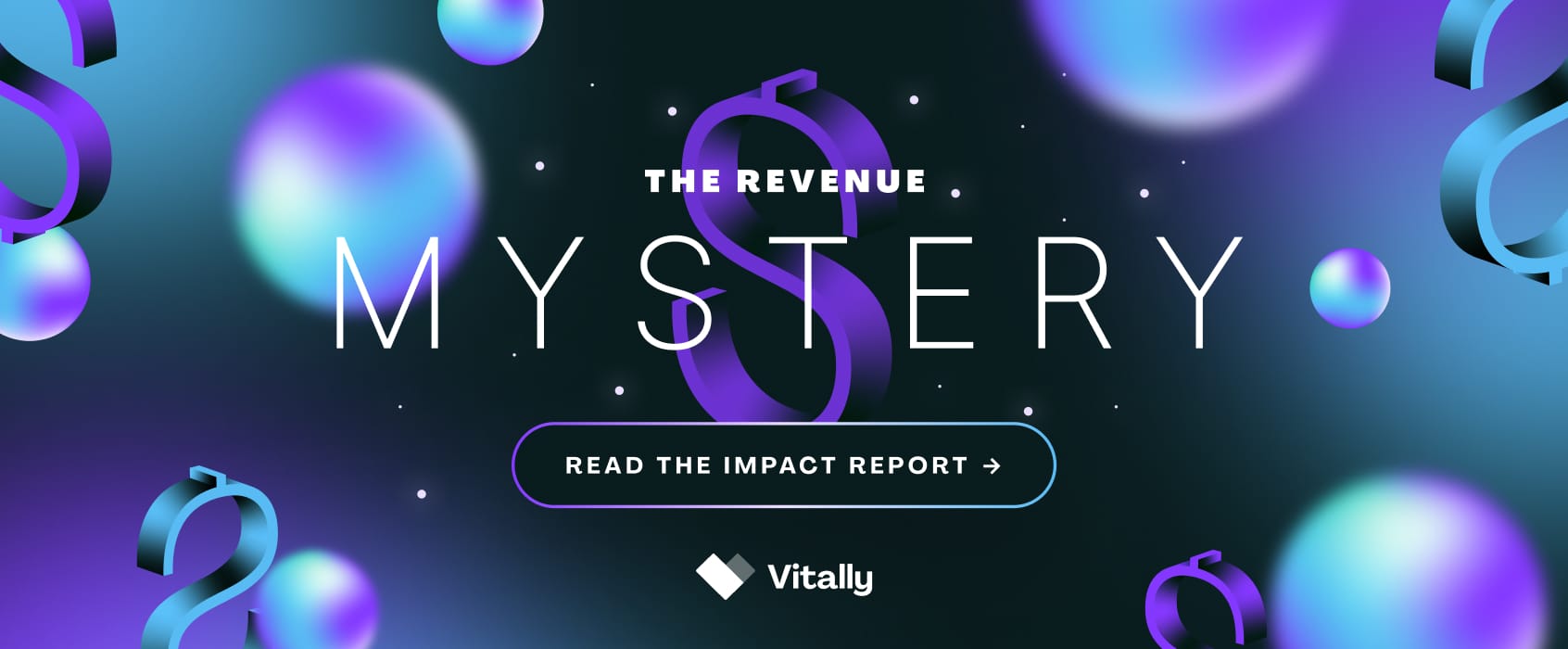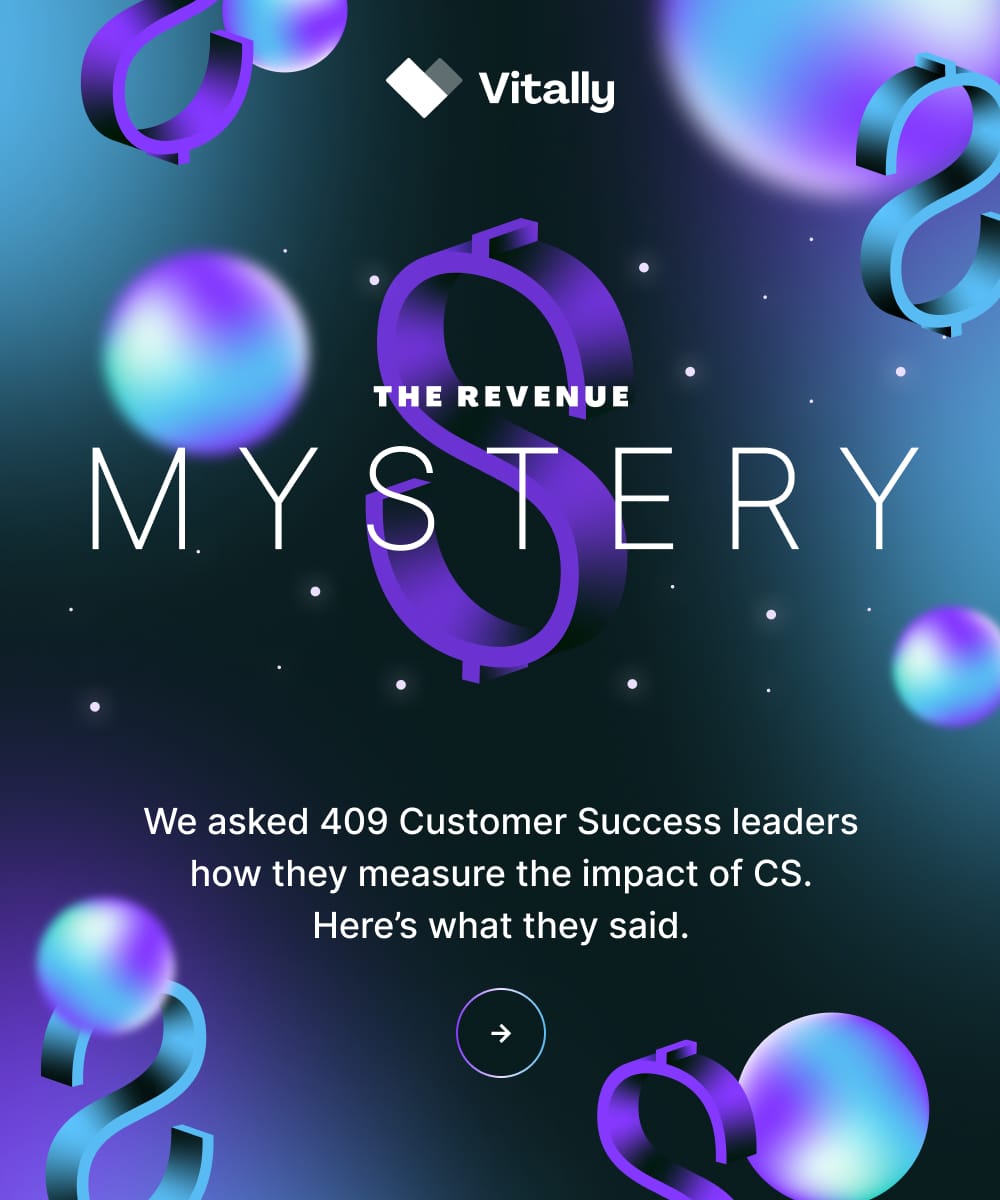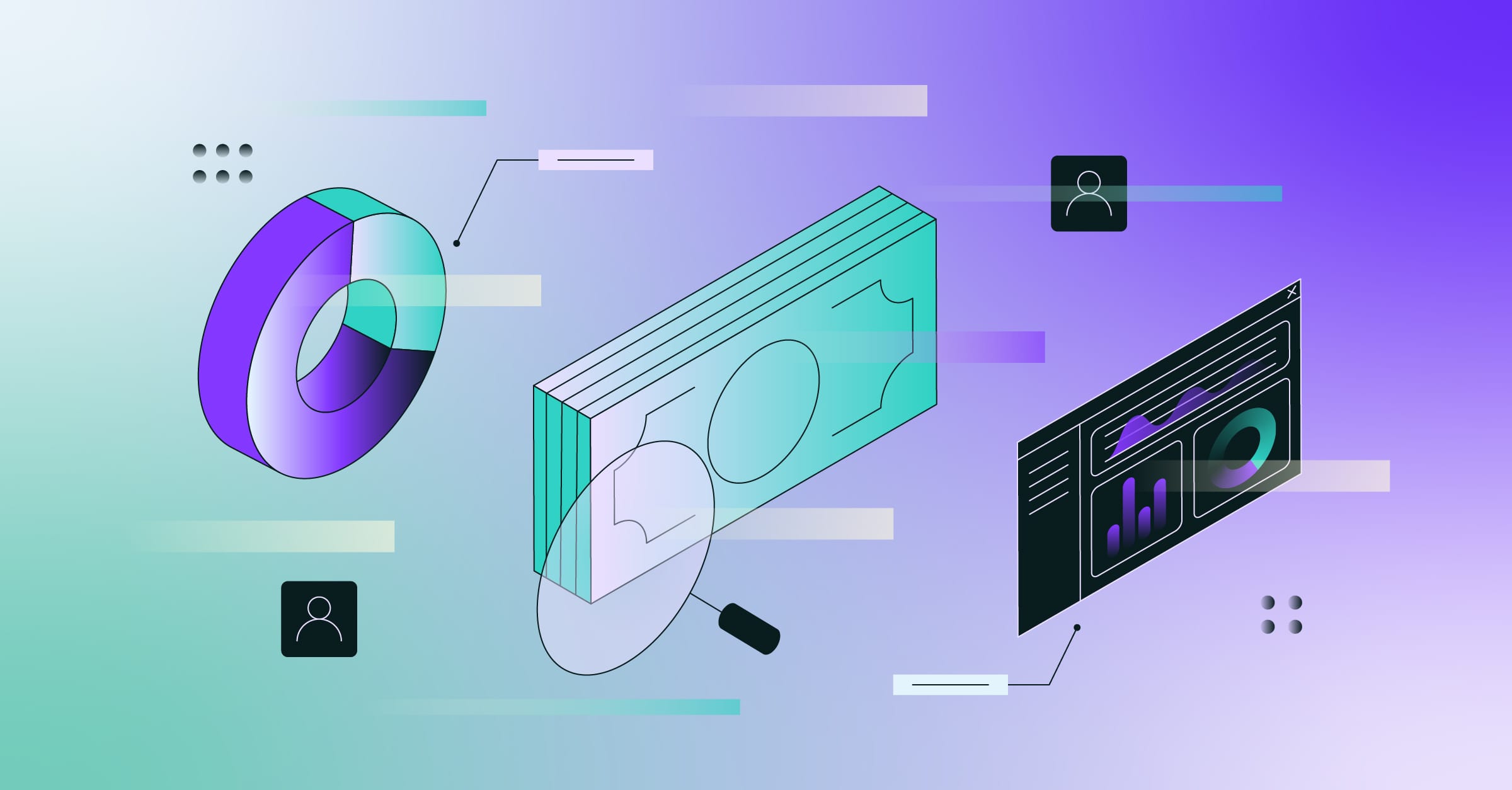
Churn is the mortal enemy of revenue growth.
If your customers aren’t getting value from your product and don’t have the right support or resources to turn to, they can turn into a churn risk.
At-risk customers will exhibit signs of dissatisfaction or reduced engagement, and this often happens early in the relationship.
“The first 30-90 days of a customer’s experience fully dictates the lifecycle of their account,” said Liam Feldstein, Director of Customer Success at BuildWitt. “Stumbles and hiccups happen, but it’s how you solve those issues and maintain progress that determines whether a customer will stick around for another year, let alone add more to their existing account.”
If you’re providing a subpar onboarding experience, not listening to or enacting customer feedback, and not analyzing your Customer Success metrics closely, your churn risk may start to increase. This could lead to an uptick in negative reviews and canceled subscriptions. Before you know it, you have a churn problem.
In this guide, we’ll discuss the early signs of churn and how to identify them. Then, we’ll wrap up with several tactics for reducing your churn risk in the long run.
6 Signs Your Customers Are At-Risk of Churning
1. Lowered Product Usage and Activity
A noticeable decline in product usage and activity is a glaring red flag. It often signifies that customers aren’t finding as much value in your product as they initially thought they would. It could also be a sign they’ve run into issues with your product, have become discouraged, and may not be receiving the support they need to get up and running again. Whatever the reason for a drop-off in product usage, it’s something you need to monitor closely.
What to Do When Product Usage Is Down
- Review Your Analytics and Reporting: Utilize analytics tools within your Customer Success Platform to monitor customer usage patterns and identify any downward trends.
- Provide Proactive Engagement: Reach out to customers showing reduced activity to understand their concerns and offer assistance.
- Offer Helpful Resources: Develop educational content to help customers realize the full potential of your product. Create a comprehensive knowledge base that you update regularly, and work with your sales enablement team (if you have one) to share resources.
2. Product Isn’t Delivering on Expectations
It’s a dreaded feeling when you take a demo call, go through the sales process, and purchase a software only for it to fall short when your team starts using it. This commonly happens when a customer is oversold on features and use cases, and it’s one of the quickest ways to erode trust — which leads to churn.
What to Do When Expectations Fall Short
- Conduct Feedback Analysis: Regularly analyze feedback to understand customer expectations and areas where your product falls short of expectations.
- Take Product Feedback Seriously: Work on improving product features based on customer feedback to meet their expectations better.
- Offer Transparent Communication: Maintain open channels of communication to understand and manage customer expectations proactively. Be honest about timelines, such as when to expect bug fixes, new features, and so on
3. Leaving Negative Feedback
When a customer is fed up and feels like no one is listening to their concerns, they often take to software review sites to express their grievances. Negative feedback, while unpleasant, offers a golden opportunity for finding areas to make improvements and building back trust.
What to Do When Negative Feedback Spikes
- Provide Responsive Customer Service: Address your negative feedback promptly and constructively. Don’t let it sit for weeks unanswered, or this could further damage your relationships with dissatisfied customers.
- Create a Feedback Loop: Customers should feel confident that actions are being taken based on their feedback.
- Broaden Your Outreach: While responding to negative feedback, also check in on other customers to ensure they’re not experiencing similar product or support issues that your dissatisfied customers are.
4. Significant Rise in Support Tickets
A sudden spike in support tickets can be indicative of underlying issues with your product, and is often a sign that customers are experiencing difficulties. These difficulties can range from small to significant, but quickly identifying the problem in your CSP is a crucial first step to getting ahead.
What to Do When Support Tickets Rise
- Analyze Your Support Feedback: Conduct a detailed analysis of the support ticket interactions to identify common issues and address them systematically.
- Notify Affected Customers: If the support tickets reference a larger problem, such as a product or service outage, it’s important to email customers affected by the issue and offer proactive support. Ignoring the problem rarely works in your favor.
- Train for Self-Service: After the problem is resolved, you could train customers in a way to help them navigate the issues they’re experiencing independently.
5. Frequent Requests for Discounts or Price Concessions
When customers frequently ask for discounts or price concessions, it might indicate perceived diminished value (relating to point #2 on this list). It could also signal that they’re experiencing budget pressure, and your product may be on the chopping block if they can’t come to a negotiation.
What to Provide Other Than Discounts or Concessions
It can be tricky to navigate customer interactions when they’re continually pressuring you on price, but caving in can lead to slower revenue growth. Instead of giving in to every request, take some advice from negotiation expert, Chris Orlob of pclub:
While Chris specializes in sales mentoring and coaching, the basis of the advice stays the same — remain confident in your value proposition.
In some cases, offering value-added services instead of discounts is a great way to maintain price integrity while satisfying the customer. For example, offering higher-tiered features on a lower plan. This can show the customer the true power of the product while retaining their business.
6. Losing ‘Champion’ Customers
Losing your very best customers is a gut-wrenching feeling as a CSM. Your “champions” are those who actively advocate for your brand, write positive reviews, and may even bring in referral business. Losing such customers can be a sign of greater issues.
What to Do When One of Your Champions Leaves
- Identify the Underlying Causes: If you’re losing your top customers, what’s stopping other customers from churning? Personally reach out to your churned champions to learn all you can about their reasoning. This information could be a goldmine for your sales, product, and marketing teams.
- Build a Retention Program: If you notice a champion customer disengaging, reach out personally to understand their concerns and work on a retention strategy tailored to them.
Other Ways to Identify Churn Risks
Perform a Segmented Analysis
Grouping customers by common traits can provide more granular insights into churn patterns. By identifying where most customers churn, businesses can take corrective action. Three ways we suggest you segment for churn analysis are:
- By Revenue: Segmenting customers by Monthly Recurring Revenue (MRR) can help identify hidden revenue leaks. For instance, if high-MRR customers are churning at a specific step, targeted interventions can be implemented to address this.
- By Signup Date: This allows businesses to test changes in the customer journey and see how they impact churn. For example, if a new onboarding email is introduced, analyzing churn by signup date can reveal if the email effectively reduces churn.
- By Behavior: Analyzing churn based on specific customer actions, like using a particular feature or enabling an integration, can help identify behaviors that lead to higher or lower churn.
Monitor NPS and CSAT
According to Hiver’s research, 60% of consumers would look for alternative solutions after two or three bad experiences. Its research also found that customers with CSAT or NPS scores of 6 or less were at a higher risk of churning, which is why monitoring these metrics in your CSP is important.
Keep an eye out for CSAT and NPS changes over time, as well. If you notice consistent month-over-month downward trends, you should conduct a deeper analysis.
- Are your G2 or Capterra reviews coinciding with this downward trend?
- What sort of feedback are you getting on support tickets, phone calls, or CSM check-ins?
- Has anything changed recently with your level of support or engagement? For example, experimenting with a new onboarding sequence.
Gathering qualitative feedback (by asking open-ended questions) in addition to your quantitative feedback can provide a comprehensive view of the issues your customers are experiencing.
Related: See how our team captures and analyzes data from churning accounts at scale with this churn report template.

5 Ways to Reduce Your Churn Risks
1. Craft a Solid Onboarding Experience
We know just how important the onboarding experience is for customers after interviewing several Customer Success experts.
When customers are guided through onboarding in a way they can digest everything and use the product to its full potential, their risk of churning should lower.
When the onboarding experience focuses more on product usage rather than education, customers can become confused when using the tool on their own. This could lead to misuse, frustration, and a lack of confidence.
To prevent customers from regretting their purchase in the first few months of using your product, be sure to perfect your onboarding experience. To do this, you should:
- Focus on Time-to-Value (TTV): Think of the easiest ways to deliver value for your customers. For example, if you’re an email service provider, this could be helping a customer set up their email marketing automations step-by-step. You may want to throw the kitchen sink at them, but focus on delivering quick and easy value first. This instills confidence early on before getting into advanced techniques.
- Schedule Regular CSM Check-Ins: The customer relationship really just begins after their purchase. You’ll want to check in regularly to ensure they’re comfortable with the product, finding success, and notifying them of any upcoming changes or updates. This is how you build long-lasting, meaningful relationships with your customers.
2. Listen to and Enact Customer Feedback
Your customers want to know they’re being heard. Actively seeking, listening to, and acting upon customer feedback won’t only resonate with your customers, but it’s a great way to improve your product offering and stay competitive.
Taking your customer feedback seriously is how you identify and address specific pain points, but it can also turn everyday customers into people who will happily refer your product to others in their network.
3. Keep Educating Your Customers
The learning process shouldn’t stop after onboarding. As products evolve and new features are added, continuous education ensures that customers can make the most of your product.
Regular emails, tutorials, and video updates can keep customers engaged and feel as if they’re part of a community. Educated customers are more likely to utilize the product to its fullest potential, leading to increased satisfaction and lowered churn probability.
4. Retarget At-Risk Customers With Engagement Campaigns
Using analytics and customer behavior tracking in your CSP, businesses can identify customers who might be at risk of churning. These customers can be targeted with specific engagement campaigns, such as special offers, personalized content, or one-on-one check-ins. The goal is to reignite their interest and address any concerns they might have. Proactively reaching out can often prevent churn before it happens.
5. Gather Learnings From Churned Customers
Let’s face it, some of your customers will leave and there’s little you can do to prevent that. However, every churned customer provides an opportunity to learn.
Exit interviews or surveys can shed light on the reasons for their departure. Understanding these reasons can offer invaluable insights into areas of improvement. Instead of viewing churned customers purely as a loss, they should be seen as a resource for improving your product and customer experience for existing users.
Related: Become a Churn Prevention Pro Using These Advanced Tactics
How a CSP Can Assist Your Churn Reduction
In this guide, we laid out what it takes to identify your at-risk customers and provided some tactics for reducing your churn risk. However, adding a Customer Success Platform to your tech stack can take your churn reduction efforts to the next level.
With real-time alerts, an extensive library of data integrations, and collaborative features, Vitally’s CSP equips teams to address customer concerns, build trust, and reduce churn before it becomes a significant issue for your business.
Vitally also offers a rich resource library to keep teams updated with industry trends and expert advice for reducing churn, such as our Blueprints.
Book your Vitally demo today and see how our top-rated CSP can help your team tackle churn head on.









